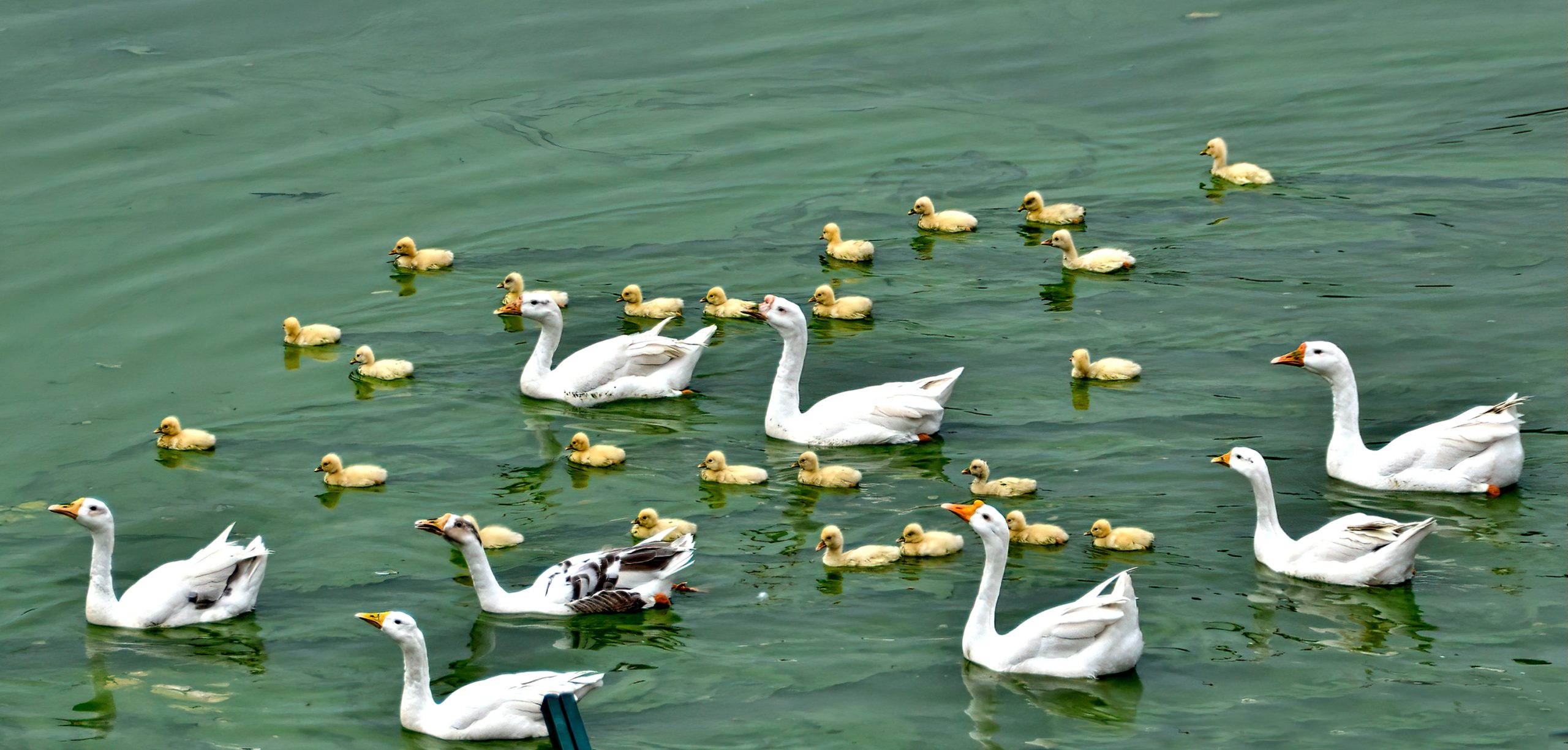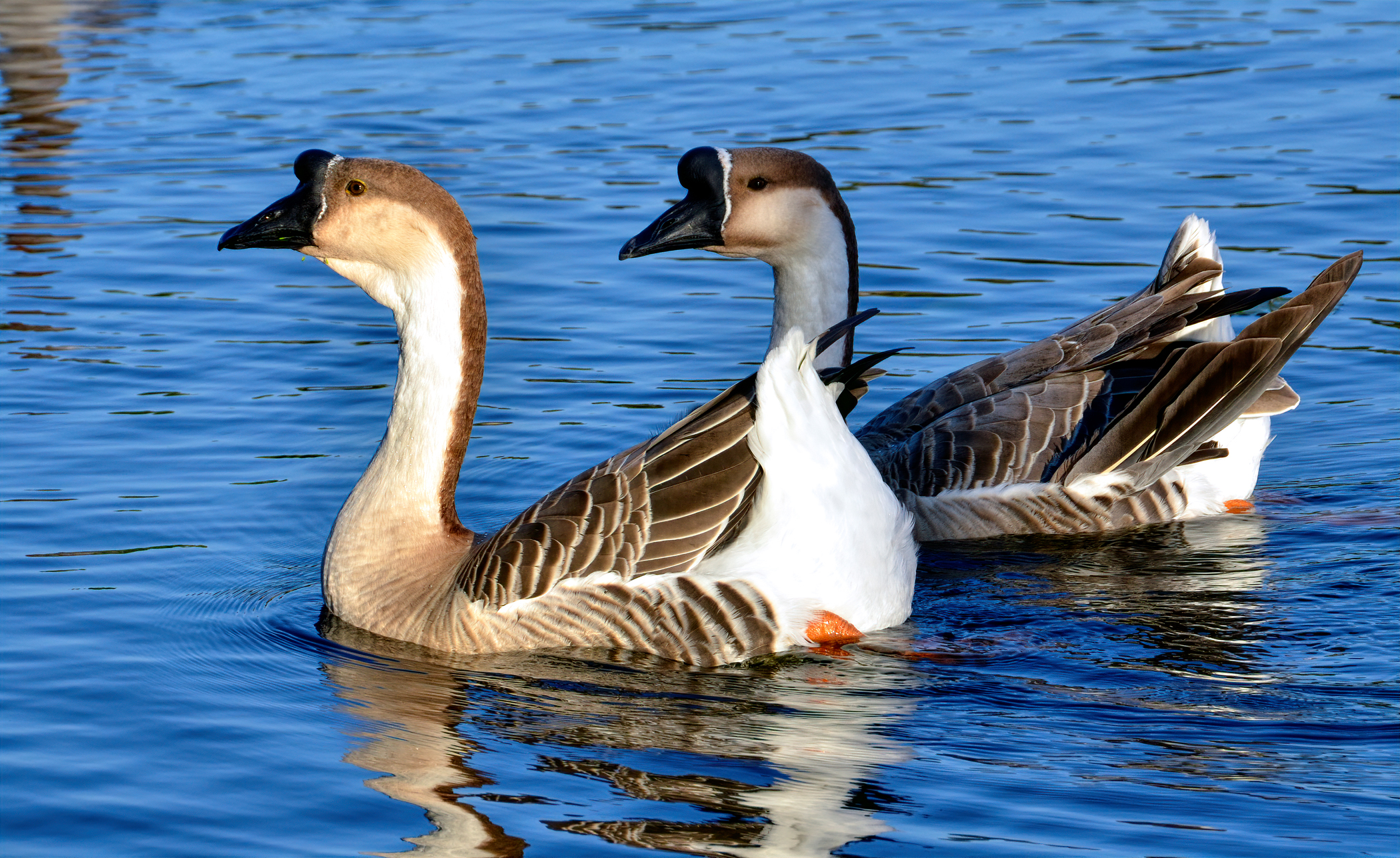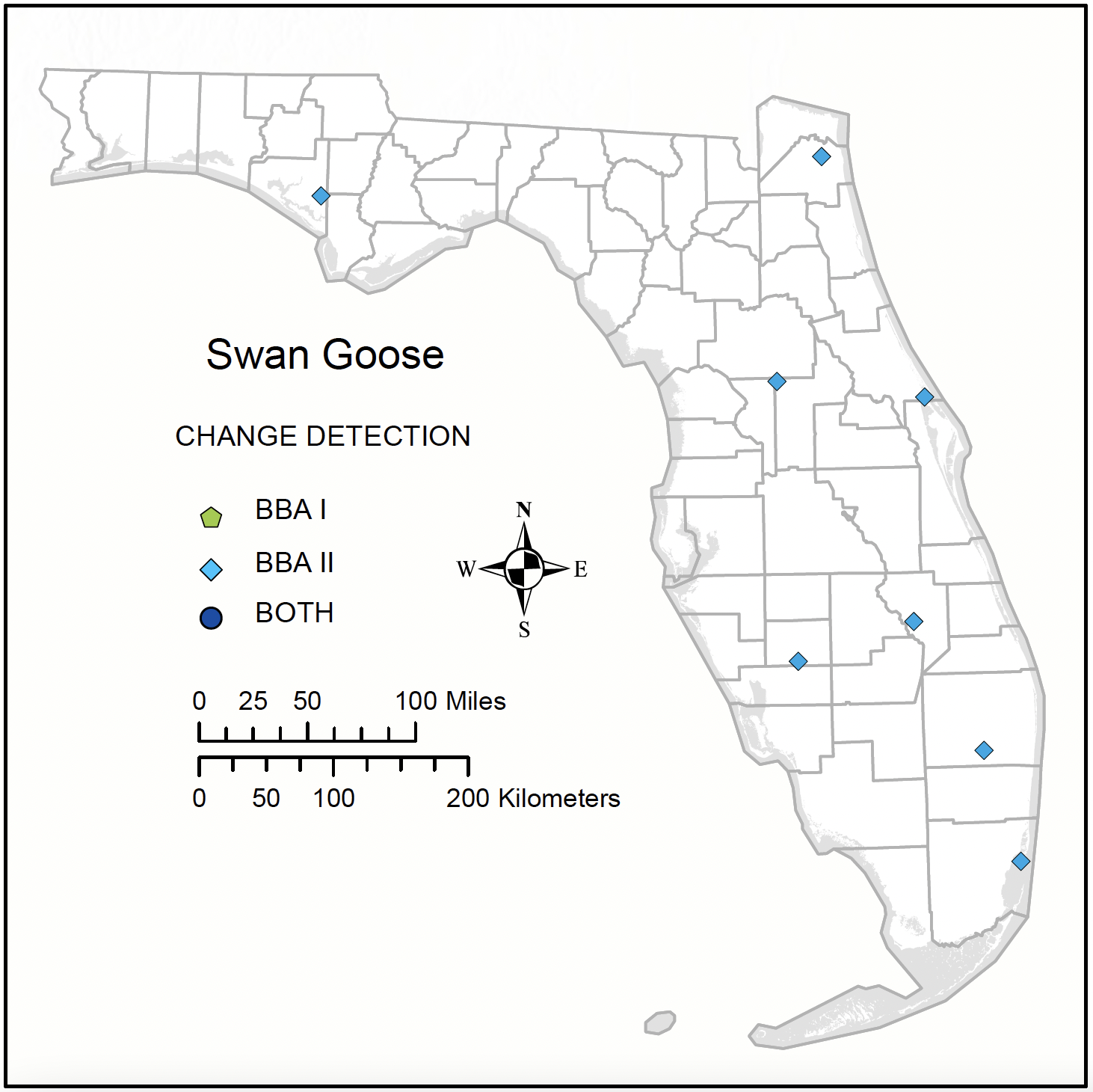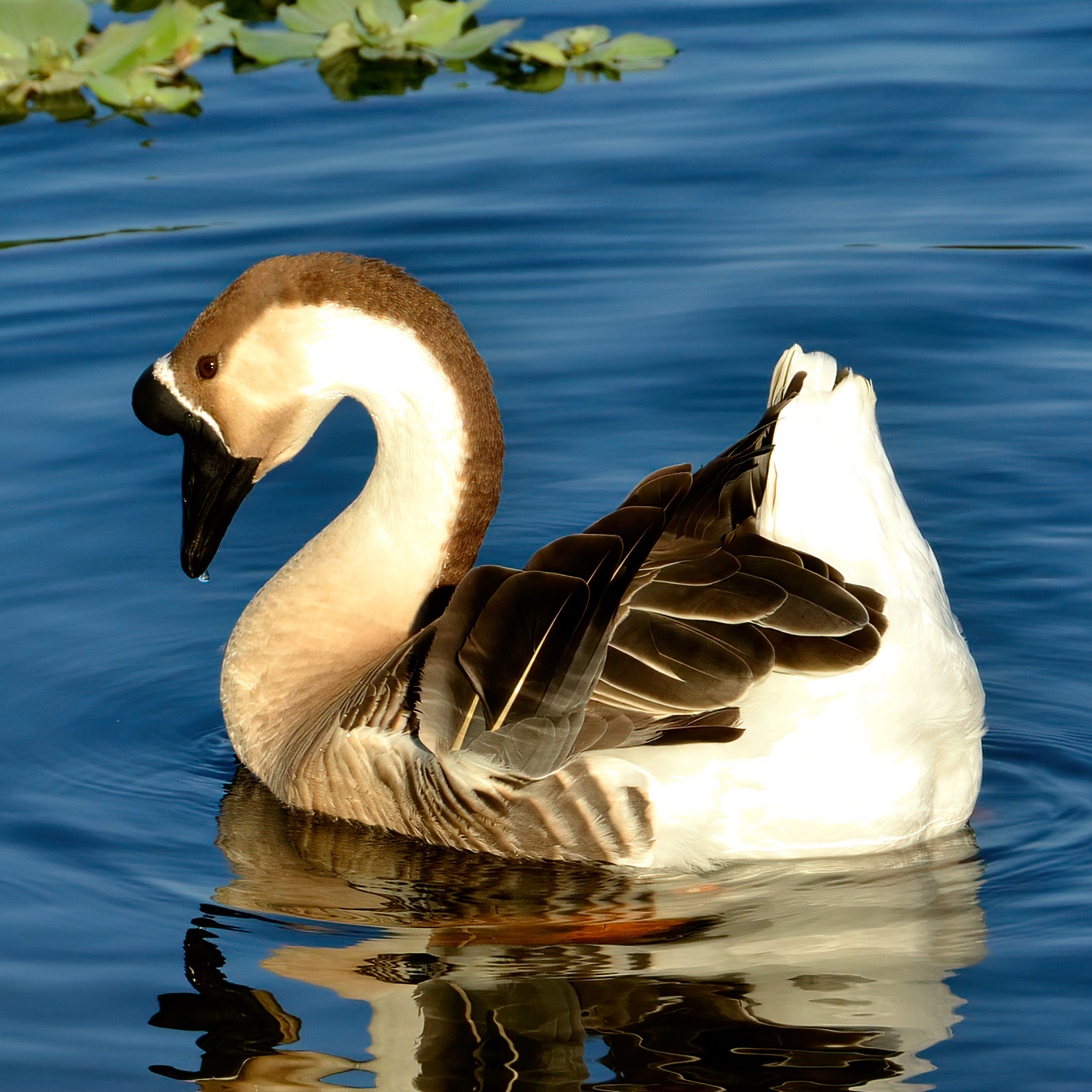Species Account
Endemic to Mongolia, northeast China, and eastern Russia; migratory, and wintering in central and eastern China, Swan Goose is the common domestic goose of farms, zoos, and private collections now widely established from introductions in many areas of the USA (Carboneras and Kirwan 2020). The eBird occurrence map shows their distribution concentrated in numerous, mostly urban, areas where they are found generally associated with wetlands such as detention ponds and lakes (eBird 2022).
Swan Goose is classified as “present, not established” (FWC 2023), and all Florida records are classified as “Escapees” (eBird 2022), despite the large number of observations at sites ranging from urban parks to remote wetlands in much of central and coastal peninsular Florida (eBird 2022). During BBA II, atlasers recorded 8 breeding occurrences of geese of unknown origins ranging from the western panhandle (Okaloosa County), Duval County, south to Broward and Miami-Dade counties (Table 1, Figure 1). In comparison, during the first Florida Breeding Bird Atlas, Swan Goose occurrences were attributed to escapees from private collections or tourist sites and breeding birds were found in 2 quadrangles in central peninsular Florida: a confirmed and probable record in Pasco County, and a probable record in eastern Lake County (FWC 2003) (Figure 2).
Given the few records in Florida, Breeding Bird Survey (BBS) estimated trends are not included for Swan Goose (Figure 3 is not included in this account). The feral Swan Goose population in Florida is likely to continue to increase, with additional range expansion, where wetland habitat is available.
Citation: Hodgson, A. B. 2023. Swan Goose (Anser cygnoides). Pages 74-78 in A. B. Hodgson, editor. Florida Breeding Bird Atlas II. Special Publication Number 9. Florida Ornithological Society, Tampa, USA.
Banner Photograph: Carole Devillers
Illustration: Diane Pierce

Data

Above Photo by Carol Devillers
Table 1

Maps
Figure 1

Figure 1. Swan Goose quad-level distribution, Florida Breeding Bird Atlas II. Figures 1 and 2 are based on data collected across all six atlas blocks within a quad. Figure 1 is based on the highest breeding code observed in each quad.
Figure 2

Figure 2. Swan Goose quad-level change detection based on the simple presence or absence of a species at any breeding code level within the quad during each atlas.
References
eBird. 2021. eBird: An online database of bird distribution and abundance [web application]. Cornell Lab of Ornithology, Ithaca, New York, USA. http://www.ebird.org/. Accessed 5 September 2022.
Florida Fish and Wildlife Conservation Commission [FWC]. 2023. Florida’s Nonnative Fish and Wildlife/Nonnative Birds/Waterfowl. https://myfwc.com/wildlifehabitats/nonnatives/birds/waterfowl/. Accessed 1 December 2023.
Florida Fish and Wildlife Conservation Commission [FWC]. 2003. Swan Goose (Anser cygnoides). In Florida Fish and Wildlife Conservation Commission (FWC), editor. Florida’s Breeding Bird Atlas: A collaborative study of Florida’s birdlife. Tallahassee, USA. https://myfwc.com/media/19667/bba_chgo.pdf.
Carboneras, C. and G. M. Kirwan. 2020. Swan Goose (Anser cygnoides), version 1.0. In J. del Hoyo, A. Elliott, J. Sargatal, D. A. Christie, and E. de Juana, editors. Birds of the World. Cornell Lab of Ornithology, Ithaca, New York, USA. https://doi.org/10.2173/bow.swagoo1.01.

